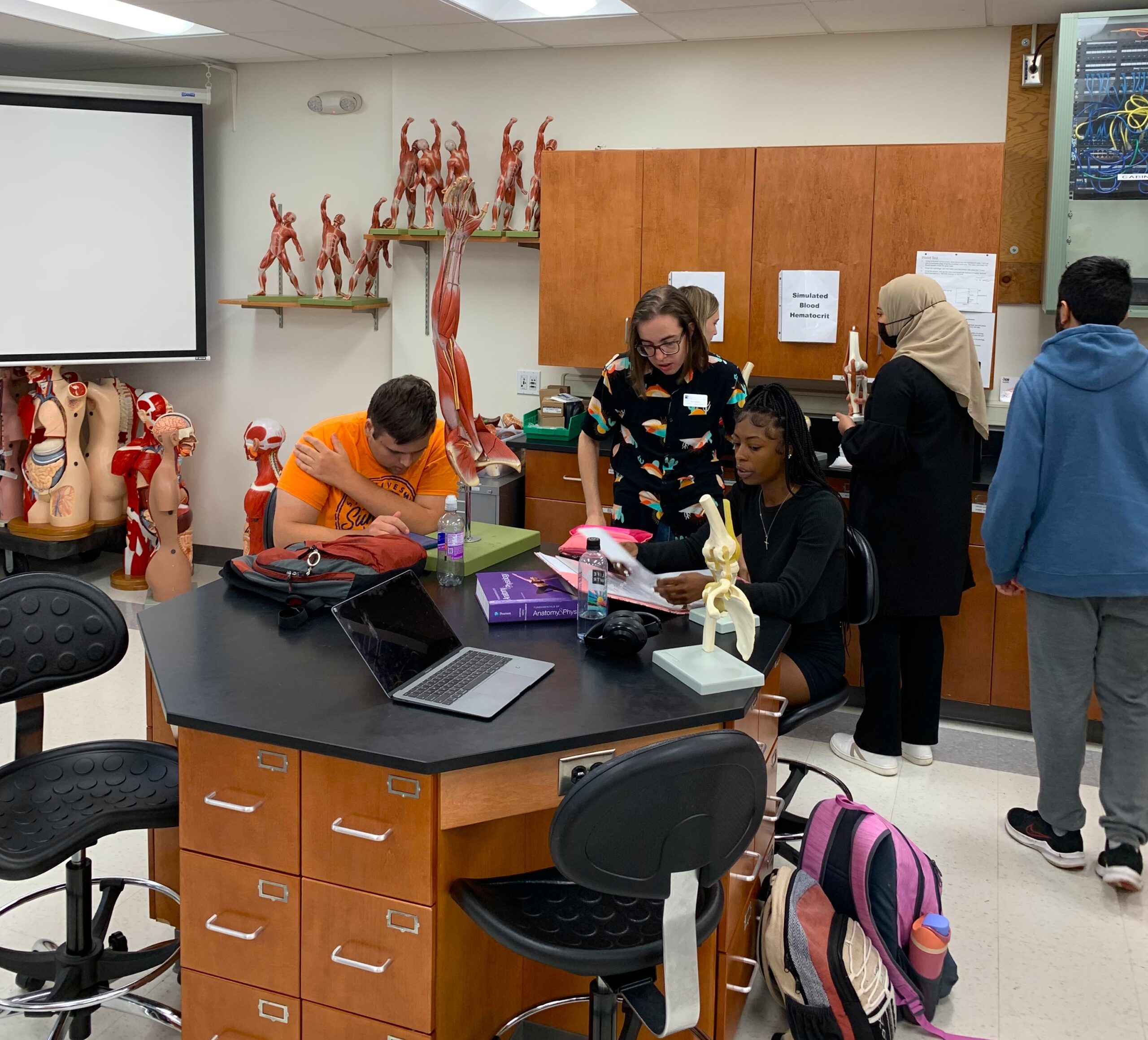With classes being filled to maximum capacity, the administration is offering students more opportunities to enroll in courses so professors will not have to face the decision of canceling a class.

Andrea Royals
– News Editor –
Every day at STLCC-Meramec, more cars fill the parking lot and more students fill the buildings. Enrollment has increased and fewer courses are being canceled.
Last semester, 9,937 students enrolled in courses at Meramec. By this spring semester, the number has increased by 815, not including those that registered late during the first week of classes, bringing enrollment on campus to its greatest number of 10,752, said Yvonne Johnson, P.h.D., dean of humanities and social sciences.
With classes being filled to maximum capacity, the administration is offering students more opportunities to enroll in courses so professors will not have to face the decision of canceling a class.
“We are trying to be more responsive to student needs because enrollment has increased dramatically within the past year-and-a-half,” Johnson said. “We have exceeded our goal by approximately 700 students.”
In the weeks prior to the semester, the administration reviews enrollment and decides whether to keep a class or cancel it. Normally professors strive for 10 to 12 students to enroll in a course. If a class does not reach this minimum quota, professors must decide whether they wish to cancel the course or teach it at a low enrollment formula, as their salary is based on the number of students that register in the course.
As the campus accepts more registered students, fewer professors have had to make this decision, Johnson said, citing that the history department did not cancel a single course for the spring semester.
The low enrollment philosophy began with Meramec President Paul Pai, Ph.D., and Vice President of Academic Affairs George Wasson who, contrary to previous practices, have encouraged low enrollment courses to continue, said Donna Sneed, dean of business administration and physical education. “We are lucky to have adjuncts and professors who are willing to accommodate students.”
Canceling courses has been a disadvantage for students who must refill their schedule at the last minute. Meramec student Vincent Hayden enrolled in a creative writing class in a previous semester that was omitted.
“I found out going to the first day of class. There was a notice on the door,” Hayden said. “It was a bummer. I had to go back to the registration center and find a different class for my schedule.” As many students have discovered, the registration process can be exhausting, especially during the first week of the semester when many classes are already full.
Not only are canceled classes stressful for students, but for instructors as well. Michael Fuller, Ph.D., a full-time professor of anthropology, said he spends hours creating lesson plans and developing blackboard documents for his classes. “There is an old fable that the harder you work for a class, the more likely it is that it will be cancelled,” Fuller said.
For one particular course, Field Methods in Archeology, Fuller said he incessantly asked for permission for his students to study at Blake Mound, a site which is not open to the public.
If the class had been cancelled, he and the students would have been disappointed, as well as the officials at Blake Mound who granted him access, he said.
Instead of canceling courses, the administration is looking for new ways to provide schedules for students, like adding late start classes.
“Because we have so many more students, we are trying to be more creative with how we treat low enrollment courses. We have cancelled some, but we try to rebuild them,” said Johnson. “That is what a community college is all about.”











